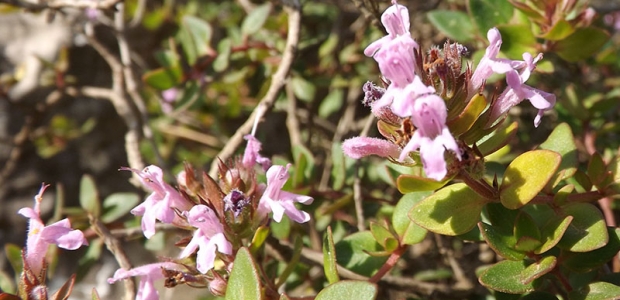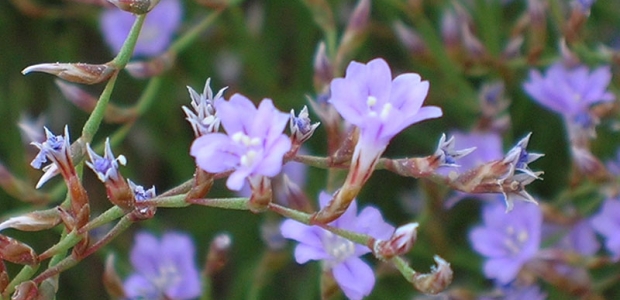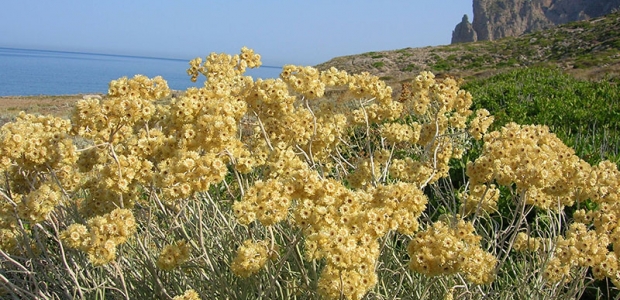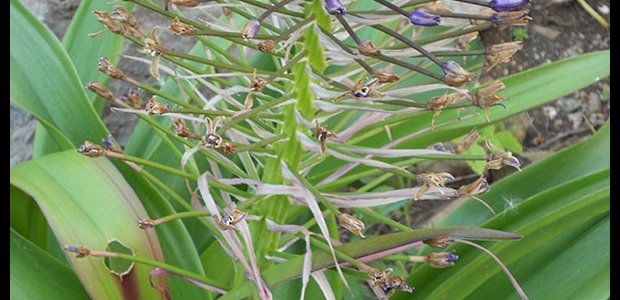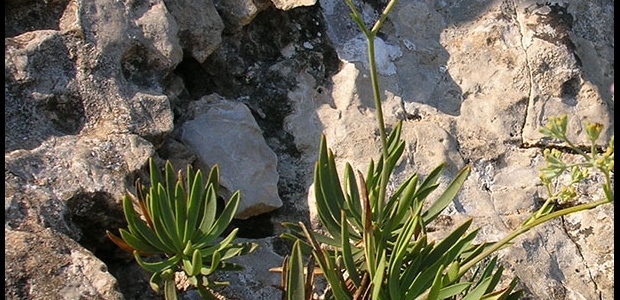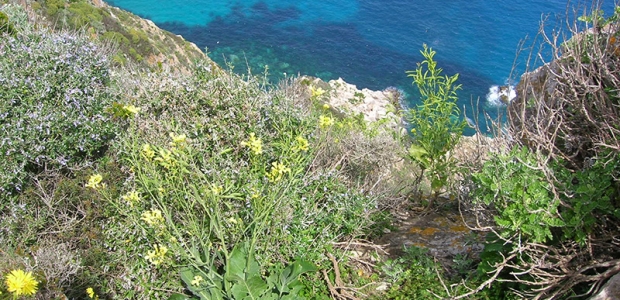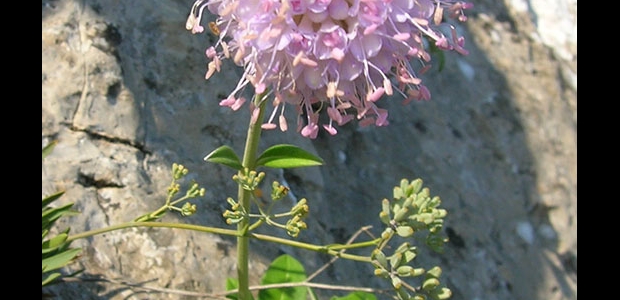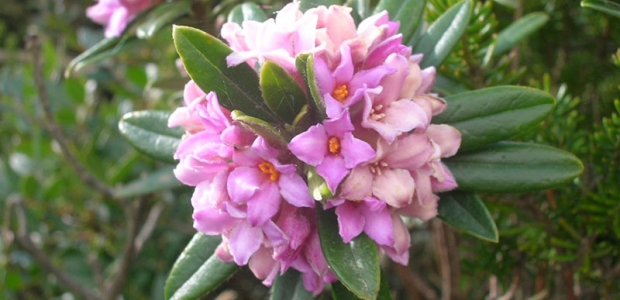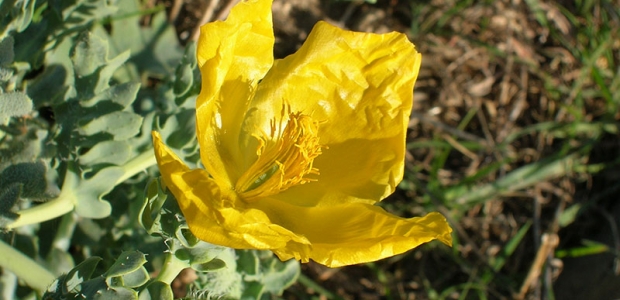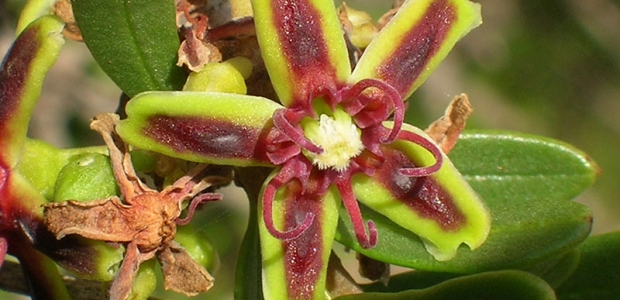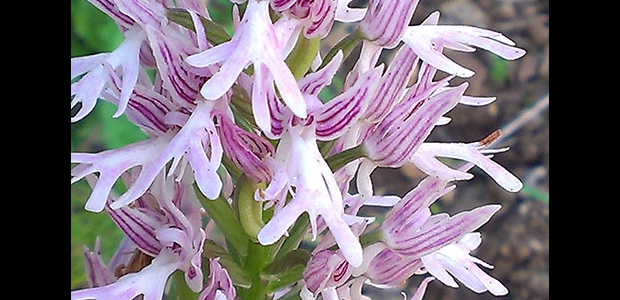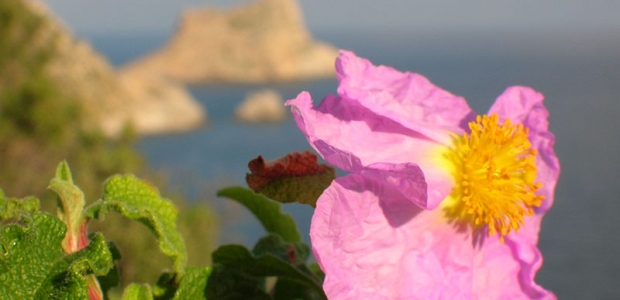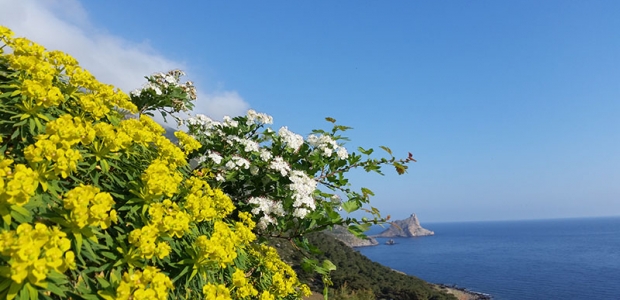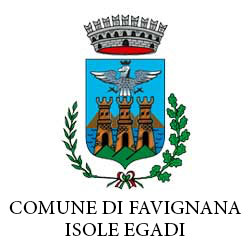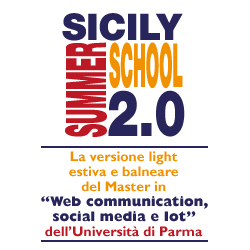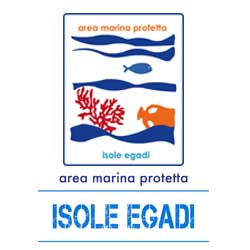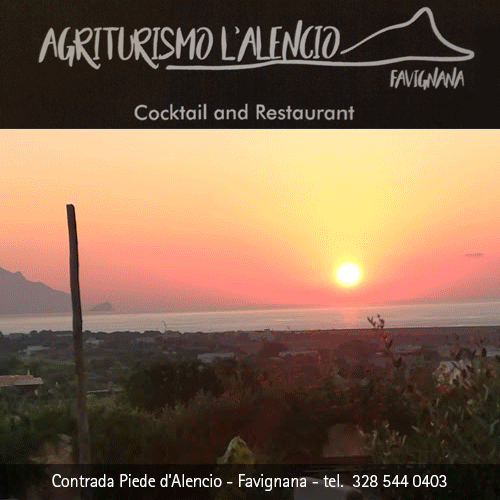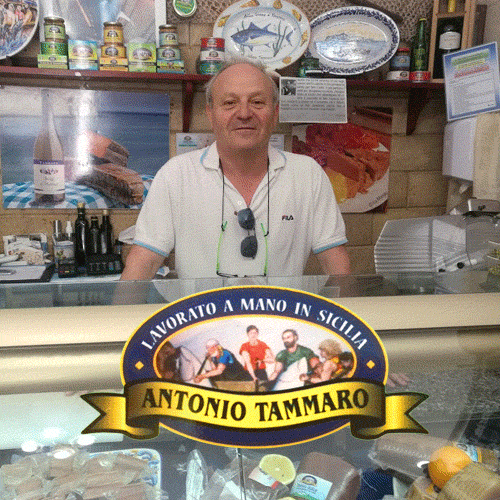Languages
The Island of Marettimo and its Flora
Vito Vaccaro testimonials and photos about Marettimo's flowers and plants
Marèttimo is the highest and richest island of the Egadi archipelago.
It separated from the mainland earlier than the other islands of Sicily, about 600,000 years ago, and this very long insularity determined characteristics of extraordinary importance: a flora and fauna that have maintained unique features over time with the preservation of precious endemisms, in practice animal species and exclusive plants of this island. If we add to this a wealth of water sources, we can understand how all this has contributed to maintaining a unique natural heritage to this day.
Polybius calls it in Greek Hierà Nèsos, the Sacred Island
The island is mainly made up of white or gray dolòmia and detrital limestone from the upper Triassic, with characteristic cliffs on the sea in the parts facing west, called by the local Barranchs. Thanks to their reddish color, especially at sunset, it was easy to call the Barranchi the "Dolomites on the Sea" and in fact a destination for alpine climbing and extreme trekking. In practice, Marèttimo, according to several geologists, represents the point of contact between the westernmost point of the Sicilian mountain range, an extension of the Apennines, and the Tunisian sector of the Maghreb chain.
The origin of its name: Polibio calls it in Greek Hierà Nèsos, the Sacred Island, while in the Itinerary Antonini of the third century AD the island appears with the name of Marittima, transformed into Malitimah by the Arabs, Gazìrat Malìtimah for Idrisi geographer of King Ruggero; and then also Marittima, Maritimo, Marittimo, Maretimo, Marètamo = current dialectal
Marettimo looks like a mountain range placed according to the north / west-south / east direction, dominated by Pizzo Falcone (686 m asl), which rises in the habit of a system of peaks often exceeding 400 meters of altitude. The landscape is noticeably harsh with very steep slopes, high cliffs and valleys with rich vegetation of Mediterranean maquis almost unexplored via a network of paths well maintained by the forest and exceptional for trekking routes in all seasons
Recent surveys on the flora of the island have led to the census of 612 entities. Of these, as many as 26 are endemic species of the Italian flora, of which 8 are exclusive to the island itself:
Marèttimo thyme (Thymus nitidus);
Limonio flessuoso (Limonium tenuiculum);
Marèttimo Perpetuino (Helichrysum panormitanum ssp. messeriae);
Ugo Scilla (Oncostema hughii );
Marèttimo Bupleuro (Bupleurum dinthifolium);
Francini Garlic (Allium franciniae);
Marèttimo coastal Senecione (Senecio leucanthemifolius);
Marettimo autumnal scilla (Prospero hierae);
The Egadi Cabbage (Brassica macrocarpa) is a species whose range is limited only to the Egadi Islands, while the Trapani Widow (Pseudoscabiosa limonifolia) has a limited range in Marettimo and few other promontories in western Sicily.
Among the other endemic species or those of particular scientific interest we recall:Camomilla costiera (Anthemis secundiramea);
Sicilian Carlina (Carlina sicula);
Sicilian Carrot (Daucus siculus);
Mediterranean pearl grass (Lithodora rosmarinifolia);
Papillary spurge (Euphorbia papillaris); very rare on the island and present only in the Egadi and with a modest population in the Zingaro reserve;
Recent surveys on the flora of the island have led to the census of 612 entities
Finocchiella di Boccone (Seseli bocconi);
Garofanassi spaccasassi (Petrorhagia saxifraga);
Rupicolous carnation (Dinathus rupicola);
Iberide florida (Iberis semperflorens);
Maritime hyssop (Micromeria fruticulosa);
Mattiazzi's Lilioasfodelo (Simethis mattiazzi);
Periploca minore (Periploca angustifolia), a North African element, present in Sicily exclusively on the Sicilian Channel Islands;
Zwerleni plantain (Plantago afra);
Down (Lagurus ovatus subsp. Vestitus);
Rock buttercup (Ranunculus spicatus subsp. Rupestris);
Senecio bicolore (Senecio willdenowii subsp.bicolor);
Stellina di Sicilia (Asperula rupestris);
Southern Tragoselino (Pimpinella anisoides).
To these must be added so many other species that are strangely present on the island, but are missing in the rest of the Sicilian territory, such as the Beak of Maritime Cranes (Erodium maritimum), species of Sardinia, of the Islands of Tuscany and of the Atlantic coasts of Spain and Portugal, the Dafne olivella (Daphne sericea), a species from the eastern Mediterranean that finds the most western part of its range in Marettimo, and the Timelea (Thymelaea tartonraira), a species that has the eastern end of its range on the island.
Finally, there are the many "common" species that are part of the splendid Mediterranean maquis or garrigue environments: Lentisco (Pistacia lentiscus), Erica (Erica multiflora), arborescent Euphorbia (Euphorbia dendroides), Rosemary (Rosmarinus officinalis), and the different species of Cistus (Cistus incanus, C. salvifolius, C. monspeliensis), Myrtle (Myrtus communis), maritime hyssop (Micromeria fruticulusa), Ruta (Ruta chalepensis), Artemisia (Artemisia arborescens), Thyme (Coridothymus capitatus), Cineraria marittima ( Senecio maritimus) Tagliamani (Ampelodesmos mauritanicus) and tree species such as the Aleppo Pine (Pinus halepensis), the Leccio (Quercus ilex), the Carob (Ceratonia siliqua), the manna ash (Fraxinus ornus) and the Hawthorn (Crataegus laevigata ).
Briefly the island looks like an open-air laboratory where it is possible to admire in the different seasons of the year and from different angles the fantastic wealth of shapes and colors of the Mediterranean landscape, all surrounded by one of the most beautiful seas of Sicily.
For information about Marettimo: www.isoladimarettimo.com
